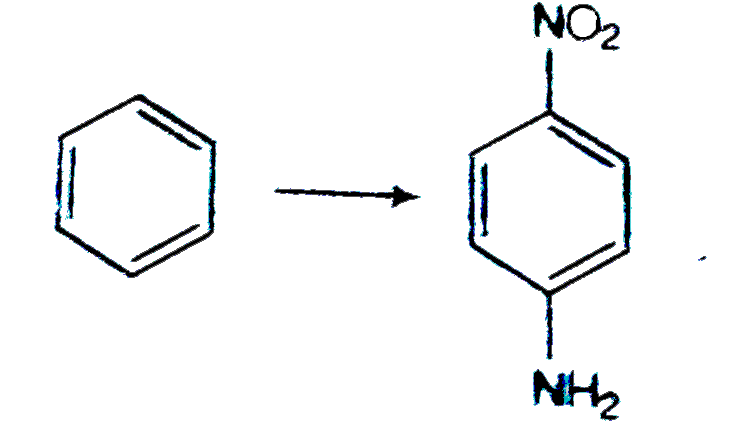How can you perform the following conversions?
Cyclohexanol to Cyclohexanone
To convert cyclohexanol to cyclohexanone, follow these steps:
1. Identify the Reactants and Products:
- Reactant: Cyclohexanol (C6H12O)
- Product: Cyclohexanone (C6H10O)
2. Understand the Reaction Type:
- The conversion involves the oxidation of cyclohexanol, which is a secondary alcohol, to cyclohexanone, which is a ketone.
3. Choose the Oxidizing Agent:
- For the oxidation of secondary alcohols to ketones, a suitable oxidizing agent is required. In this case, potassium dichromate (K2Cr2O7) in an acidic medium (like sulfuric acid, H2SO4) is commonly used.
4. Set Up the Reaction:
- Mix cyclohexanol with potassium dichromate and sulfuric acid in a reaction vessel. The acidic medium helps facilitate the oxidation process.
5. Carry Out the Reaction:
- Heat the mixture gently to promote the reaction. The potassium dichromate will oxidize the hydroxyl (-OH) group in cyclohexanol to a carbonyl (C=O) group, forming cyclohexanone.
6. Monitor the Reaction:
- Monitor the reaction progress. The color change from orange (due to K2Cr2O7) to green (due to Cr3+) indicates the completion of the oxidation.
7. Isolate the Product:
- After the reaction is complete, the product (cyclohexanone) can be isolated through techniques such as distillation or extraction.
8. Purify the Product:
- If necessary, purify the cyclohexanone using techniques like recrystallization or further distillation to obtain a pure sample.
Final Reaction:
The overall reaction can be summarized as:
Cyclohexanol+K2Cr2O7+H2SO4→Cyclohexanone+Cr3++H2O
- Reactant: Cyclohexanol (C6H12O)
- Product: Cyclohexanone (C6H10O)
- The conversion involves the oxidation of cyclohexanol, which is a secondary alcohol, to cyclohexanone, which is a ketone.
- For the oxidation of secondary alcohols to ketones, a suitable oxidizing agent is required. In this case, potassium dichromate (K2Cr2O7) in an acidic medium (like sulfuric acid, H2SO4) is commonly used.
- Mix cyclohexanol with potassium dichromate and sulfuric acid in a reaction vessel. The acidic medium helps facilitate the oxidation process.
- Heat the mixture gently to promote the reaction. The potassium dichromate will oxidize the hydroxyl (-OH) group in cyclohexanol to a carbonyl (C=O) group, forming cyclohexanone.
- Monitor the reaction progress. The color change from orange (due to K2Cr2O7) to green (due to Cr3+) indicates the completion of the oxidation.
- After the reaction is complete, the product (cyclohexanone) can be isolated through techniques such as distillation or extraction.
- If necessary, purify the cyclohexanone using techniques like recrystallization or further distillation to obtain a pure sample.
The overall reaction can be summarized as:
Cyclohexanol+K2Cr2O7+H2SO4→Cyclohexanone+Cr3++H2O
Topper's Solved these Questions
- ALDEHYDES, KETONES AND CARBOXYLIC ACIDS BOOK - AAKASH INSTITUTE ENGLISHCHAPTER - ALDEHYDES, KETONES AND CARBOXYLIC ACIDS EXERCISE - Assignment (SECTION -J Akash challengers Questions)
10 Videos
- ALCOHOLS, PHENOLS AND ETHERS BOOK - AAKASH INSTITUTE ENGLISHCHAPTER - ALCOHOLS, PHENOLS AND ETHERS EXERCISE - Try Yourself
5 Videos
- AMINES BOOK - AAKASH INSTITUTE ENGLISHCHAPTER - AMINES EXERCISE - Assignment Section -J (Aakash Challengers Questions)
9 Videos
Similar Questions
How can you perform the following conversions?
But-2-ene to Ethanol.
View SolutionHow can you perform the following conversions?
Butyne to Butan-2-one
View SolutionHow will you carry out the following conversion?

View SolutionHow will you carry out the following conversion?

View SolutionHow will you carry out the following conversion?

View SolutionHow will you bring out the following conversion?

View SolutionHow will you carry out the following conversion?

View SolutionHow will you carry out the following conversion?

View SolutionHow will you bring about the following conversions ?

View SolutionHow will you bring out the following conversions ?
Ethene to ethyne
View Solution
